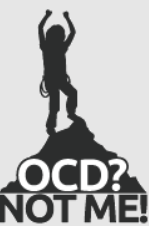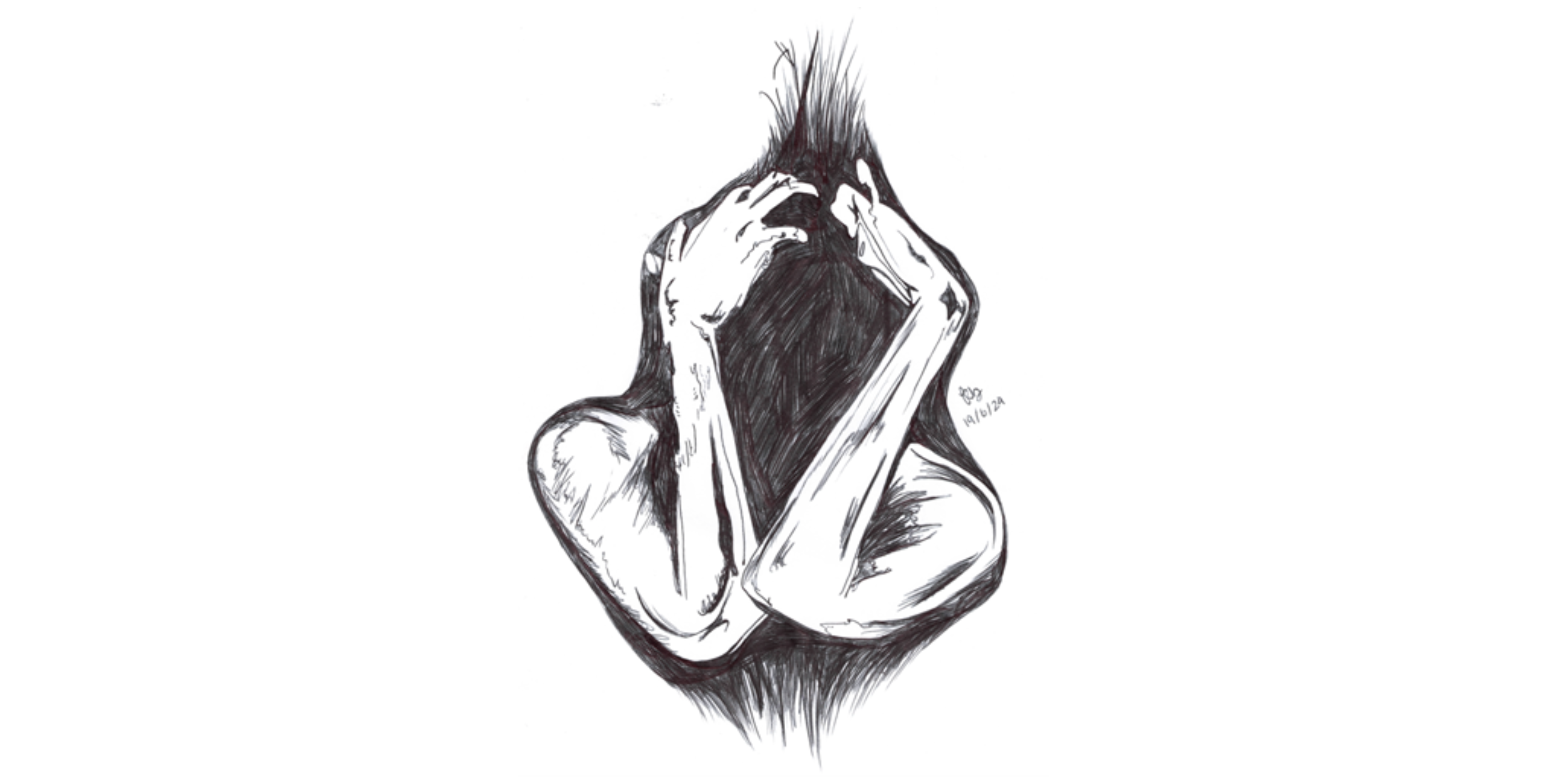Overview
OCD, or as it is clinically known, Obsessive-compulsive disorder, is an anxiety condition most commonly diagnosed either in late childhood or adolescence. Although stereotypes of OCD focus on ideas of contamination, organisation and cleanliness, this is only one component (which may not be a part of everyone’s experience) of what is a far more complex condition.
OCD can significantly interfere with daily life and cause great distress. The World Health Organisation (WHO) ranked OCD amongst the ten most disabling illnesses globally, and the fifth most disabling for women 15-44.
OCD is treatable and a person with OCD can live a fulfilling life. However, without proper support it can become a long-term, challenging condition. Treatments are also very individual – what works for one may not work for another. It is also important to understand that treatments are not an ‘immediate solution’ and often a combination of different therapies, medications and supports are needed for a person to flourish.
Note: OCD is different to Obsessive-Compulsive Personality Disorder (OCPD). The following information is relevant to (OCD) only.
Signs and symptoms
As its name suggests, OCD has two kinds of symptoms: obsessions and compulsions.
Obsessions are intrusive and unwanted thoughts, images or urges that keep coming into the mind and causing distress or anxiety. Obsessions cannot simply be pushed away or ignored, they are persistent and pervasive. For some people, obsessions are always on their mind. For others, they can be triggered by certain sounds, smells, situations or objects.
Compulsions are repetitive behaviours or ritualistic actions that a person does over and over in an attempt to reduce anxiety or prevent something bad from happening.
Performing a compulsion can – at times – provide momentary relief. However, this is short-lived and in many instances it may in fact make an obsession feel more real or can simply cause the compulsion to return even stronger. Continually engaging in compulsions is incredibly time-consuming and can quickly become debilitating. Resisting a compulsion – on the other hand – can feel uncomfortable, distressing, unsafe and frightening. A person may often believe that some harm will come to them, a loved one, or even a stranger as a result of doing so. This can evoke a deep sense of guilt and fear.
When a person with OCD tries to ignore or stop their obsessions and compulsions, they often find their distress or anxiety increasing. Obsessions and compulsions usually occur together with OCD though it is possible to have only obsession symptoms or only compulsion symptoms.
The types of obsessions and compulsions a person experiences may change over time though certain themes often show up, including the following:
Examples of obsessions include:
- A fear of being contaminated by dirt or germs
- Repetitive and intense fear and doubt about having completed simple tasks like locking a door or turning off an appliance
- A need to follow a strict routine
- Extreme thoughts about illness, accidents or death to the person or to others and the need to prevent this harm
- Unwanted sexual or violent thoughts
- Fears and thoughts about acting inappropriately in public
- Preoccupation with religious or moral issues
Examples of compulsions include:
- excessive house cleaning, hand washing, showering, tooth brushing. An obsession about germs may also lead to avoiding touching others’ hands and surfaces such as door handles.
- needing things to be orderly or symmetrical, or following certain patterns
- hair pulling and skin picking
- Inability to move on from a specific concern or repeatedly bringing it up
- silently repeating a word or phrase or prayer
- hoarding random objects
- repeatedly checking that doors have been locked and appliances turned off
- repeating routine activities and actions such as picking something up, opening a drawer, moving from one place to another
- touching or tapping out a sequence a certain number of times
- fixating on particular words or numbers that are considered “safe”
- repeatedly asking questions or seeking reassurance
- mental rituals – replaying events in one’s mind
Types of OCD
The types of obsessions and compulsions a person experiences may change over time, and are also dependent on the type of OCD that a person is experiencing. There are many types of OCD and different ways in which thought patterns may repeat.
Contamination OCD
A common subtype of OCD that is perhaps the most sensationalised and most understood (though poorly at that). Contamination OCD is characterised by a sensation of distress, discomfort and of uncleanliness of certain objects, environments, people, or animals. There is also often a prominent fear of becoming ill or contracting a disease.
Moral scrupulosity OCD
A lesser-known subtype of OCD that is characterised by a fear of becoming morally (or immorally) tarnished. It relates strongly to the fear of being seen as or of believing that oneself is morally corrupt or ‘bad’. A person fears that their actions or thoughts don’t align with their moral compass, or that they are not a ‘good’ person. It is important to note that these fears do not mean a person is morally ‘bad’ – in fact, those who experience moral scrupulosity OCD are usually amongst the kindest, most considerate people. Moral scrupulosity OCD is often seen in partnership with other, more widely-recognised forms of OCD and as such is not well identified.
Just right OCD
According to the International OCD Foundation, over 50% of people with OCD will experience ‘just right’ symptoms. Obsessions and compulsions centre around the belief and fear that something is ‘not quite right’. It is deeply associated with perfectionism, but not always in the stereotypical sense.
People with just right OCD typically know that their patterns of thinking are not logical, but it is a feeling of unease that can’t be shaken
Checking OCD
Checking OCD is just that – repeated and compulsive checking on something or someone in an attempt to gain reassurance that something ‘bad’ won’t happen.
We are all human, and we all have experienced a compulsion to check on something we have or haven’t done. For instance, it is safe to presume that at some stage, everyone has questioned whether or not they have locked the door or turned off an appliance. For people with Checking OCD, these thoughts can be overwhelmingly loud and suffocating. Not to mention, there is often a fear that if the door is not locked or if the light switch is still on, then something truly awful will happen as a direct result.
Checking OCD can also look very different from just checking whether or not a door has been locked. Some (not all) other ways that it may look include:
- Monitoring and examining one’s health for signs of illness or disease
- Checking that information is correct, even when this has already been done
- Checking for safety hazards or potential dangers
- Checking personal items to ensure that they are all accounted for
- Checking memories to make sure that they are accurate
Harm OCD or Pure-Obsessional OCD (Pure OCD)
Harm OCD is one of the most difficult types of OCD to talk about. How do you discuss unwanted and upsetting thoughts that relate to harming yourself or others?
If you’re human, you’ve probably experienced these fleeting thoughts. Maybe it’s crossed your mind what would happen if you were to fall off a balcony, or if you were to push the person next to you into the road. Having these thoughts and having an ideation to perform them are both completely different things.
It is important to note that just because someone is experiencing harm OCD, this does not mean they are dangerous. They have no desire nor intention to inflict harm, they are terrified by the concept that they could.
For people who have harm OCD, these thoughts can be persistent, overwhelming, frightening and all-consuming. They may engage in a number of compulsions aimed at reducing this fear – for instance avoiding sidewalks or removing all sharp objects from their kitchen.
Sexual orientation OCD
A subtype of OCD that causes people to have repetitive and obsessive thoughts questioning their sexual orientation. They fear that they are ‘fraudulent’ or that they are not being true to themselves and their real identity. People with this form of OCD may engage in compulsions with the hope of attaining some form of certainty around their sexuality.
Counting OCD
Counting OCD is – as the name suggests – characterised by a powerful urge to count, tally, record and measure. Typically this is done in order for a person to feel satisfied – a sense of being ‘good’ or ‘right’ or to avoid the discomfort of feeling ‘wrong’ (as you can see, many subtypes of OCD – such as moral scrupulosity OCD, counting OCD, and checking OCD – actually interweave and overlap).
Symmetry OCD
People with symmetry CCD experience intense anxiety when things are not orderly, symmetrical and even. This form of OCD is another one that is highly sensationalised and – to a degree – even glorified and fetishised in the media, however in reality can be incredibly debilitating. It is very similar to just right OCD but focuses more on physical order and organisation as opposed to ideas /intangible patterns.
False memory OCD
An OCD subtype in which concerns about memories, blanks in memory, and uncertainty in memories can evoke extreme anxiety and discomfort. A person can become obsessed with the idea that they have done something wrong or behaved in a way, despite there being no evidence of them having done so. Often this fear can become so intense that a person needs to engage in compulsions to alleviate some of their anxiety – these may take the form of reassurance-seeking, confessing to things that never happened, physical checking, avoidance and more.
Other sub-types of OCD
As with any resource, this is not a comprehensive list and there are many other types and ways in which OCD may show up for a person. Some other subtypes not mentioned here include hoarding OCD, Rumination OCD, religious OCD, Trichotillomania, existential OCD and many more.
OCD and tic conditions
Sometimes, it might be difficult to differentiate OCD and tic conditions from an outside perspective, as the symptoms might appear relatively similar. However, they are fundamentally quite different.
Tic conditions, refer to a spectrum of neurological conditions that result in repetitive, sudden, and often uncontrollable sounds or movements.
Because OCD compulsions can sometimes appear to be unregulated or ‘random’, an outsider might easily mistake it for a tic. This is made more challenging by the fact that the stigma and shame around OCD combined with the misconceptions and lack of true comprehension can make it difficult for a person experiencing OCD to fresh and honestly talk about what might be causing them to perform these compulsions.
That said, a lot of OCD compulsions are more subtle and not as easy to perceive. Many people may also learn how to hide their compulsions such that others don’t perceive them (which can often be accompanied by judgement).
It is also important to understand that a lot of tics are co-occurring alongside OCD.
Note: This primary focus of this page is OCD. to learn more about tic conditions, please seek advice from your health professional.
Myths and facts
Myth: people with OCD like cleaning
Fact: just about all humans find there to be something inherently satisfying about cleaning (not necessarily the actual act of doing it, but at least the result) – it itches a part of our brain. However, that does not mean that a person LOVES cleaning. In fact, many people with OCD who appear to excessively clean do so not because they enjoy it, but rather because they feel that they have to or because it provides them a feeling of relief.
Myth: People with OCD are afraid of germs
Fact: contamination OCD is one of many forms of OCD, and is not applicable to everyone. Germs, illness and contamination can be a common fear amongst people with OCD, but not in the way you might think.
Myth: everyone has intrusive thoughts
Fact: Technically, yes. Everyone has thoughts and impulses that pop into our head, but usually we are able to brush these off as irrelevant and move on with our day. For people with OCD, thoughts can become persistent and disruptive to a point where they take up a large proportion of our brain space.
Myth: everyone is ‘a bit OCD’
Fact: OCD is not an adjective, a person either has OCD or they do not have OCD, and this can present in different ways for different people in different situations. Humans like order and organisation, that is not reserved for people with OCD nor is there anything strange or abnormal about that – in fact it is incredibly understandable. Just because you enjoy pressure washing videos or an organised pantry does not mean you have OCD, even ‘just a little bit’.
Why Does OCD Develop?
There are lots of theories about what causes OCD. Possible explanations are:
- OCD is believed to have a genetic component – a person with a family history of OCD is more likely to experience it themselves.
- OCD may be due to differences in brain chemistry, structure or function.
- A person may become caught in a cycle of believing their thoughts and maintaining the symptoms.
- Typically people with routines, structured and rigid personality types are more likely to experience OCD. It may be a way of helping them feel safe and secure.
It is likely that a combination of genetic and environmental factors contributes to the development of OCD. Symptoms can get worse if a person with OCD is experiencing stressful life events or undergoing hormonal changes.
OCD is estimated to affect about 3.6% of Australians – more than 500,000 people (ABS 2023; Healthdirect 2024)
How is obsessive compulsive disorder diagnosed?
Professional diagnosis
A diagnosis of OCD can be made by a GP, but a formal assessment is typically (and recommended to be) conducted by a psychologist or psychiatrist. Typically a GP may be the first point of contact but will likely refer to a mental health professional in this process.
A diagnosing clinician will want to know if the person is having obsessions or compulsions that are interfering with daily living. Discussion will focus on thoughts, feelings and behaviours and a diagnosis will be made after the doctor has gathered enough information. The doctor may ask to speak to family members to help make the diagnosis.
The person’s obsessions and compulsions must be:
- taking up a lot of time each day
- be excessive
- be causing a lot of distress
- interfering with daily activities
When assessing a person for OCD, the doctor will consider whether the symptoms could be due to other conditions, such as depression, schizophrenia, obsessive-compulsive personality disorder, tic conditions, eating disorders, substance abuse, ADHD, or other anxiety conditions. OCD symptoms can be similar to these mental health conditions. It is also possible to have OCD and another mental illness together. It may therefore take time to figure out a person’s diagnosis.
Self-diagnosis
Self-diagnosis for mental health concerns is sometimes viewed critically. While self-diagnosis may have a negative impact for some, a professional diagnosis can also come with challenges. It’s important to recognise that many people face barriers in accessing and receiving a formal diagnosis.
Individuals have a deep understanding of their own thoughts and feelings. If someone believes they are experiencing a mental health challenge, their experience is valid and deserves to be acknowledged. Seeking support—whether through self-reflection, peer connection, or professional guidance—can help in understanding and navigating these experiences.
There is also a major difference between living with a mental health condition and experiencing poor mental health. Poor mental health is something that most of us experience throughout the course of our lives, whereas mental ill-health can be incredibly debilitating, demoralising, and interferes with a person’s daily living. A person truly experiencing mental ill-health experiences barriers and challenges that are more long-spanning.
Treatments
OCD is usually a lifelong condition but treatment will help a person gain better control over their obsessions and compulsions and stop them from completely disrupting their daily life. There are a number of ways to help people with OCD, and often using a combination has the best outcomes for a person.
Psychological treatments
For most mental health concerns, psychotherapy is typically the first line of treatment. Though there are many types, the most common forms of psychotherapy for OCD are cognitive behavioural therapy (CBT) and dialectical behavioural therapy (DBT).
Cognitive behaviour therapy (CBT)
Cognitive behaviour therapy (also called CBT) is used by specialist mental health professionals to change a person’s thinking patterns and behaviour. Therapy includes gently exposing the person to situations that trigger their obsessions and compulsions and helping them to learn ways to resist the compulsive behaviour. These situations are practiced daily until anxiety eventually decreases.
Dialectical Behavioural Therapy (DBT)
Dialectical Behavioural therapy (also called DBT) is a type of psychotherapy that provides a structured approach to building practical life skills.
Anxiety management
A range of techniques can help a person with OCD to manage their obsessions and compulsions. These include meditation, slow breathing techniques and relaxation training. These techniques are most effective when they are used with a CBT program.
Exposure and Response Prevention (ERP)
Exposure and Response Prevention (ERP) is a type of therapy that gradually exposes people to situations that trigger anxiety while helping them resist compulsive behaviours. Over time, this can reduce anxiety and build confidence in managing difficult thoughts and feelings.
Medication
For some people with OCD, antidepressants may be suggested. These can help the brain to restore its chemical balance. Antidepressants can only be prescribed by a medical doctor (GP or psychiatrist). It can take a few weeks before antidepressants start to work and, in that time, they can cause side effects, which should eventually go away. If a person decides to stop taking antidepressants, they should talk to their doctor first, as the dose should be reduced slowly. If the person does not find antidepressants helpful, the doctor may suggest other psychiatric medications.
The doctor needs to know if the person is taking other medications, including prescription, over-the-counter, herbs or supplements, as antidepressants can make some other medications less effective and may cause reactions when combined.
Self-help
As well as the treatment options discussed above, the person with OCD might find it helpful to try some of the following things:
- Delay the urge to do a compulsive behaviour by distracting yourself with something else (exercise, read, play a game).
- Keep a journal and write down thoughts or worries. Note how repetitive they are.
- Anticipate urges. If the person knows there are certain things they always compulsively check, pay extra attention to doing it the first time (for example, say out loud that it has been done). When the urge to check later comes up, re-label it as “just an obsessive thought” instead of checking again.
- Allocate a set time each day for worrying and leave the rest of the day free of obsessions and compulsions. When thoughts or urges come to mind, write them down and wait until the “worry time” to do them.
More ideas can be explored on the Better Health Channel.
Education
It may be helpful to learn more about OCD by reading websites like this one, information sheets from health professionals, and talking to professionals and other people who have OCD (or family members with OCD), either through support groups or online forums.
Additional treatment options
For a person with severe, OCD who does not respond to the treatments listed above, a psychiatrist may recommend other types of treatment, including: deep brain stimulation (DBS) and transcranial magnetic stimulation (TMS).
Help & Support
OCD is distressing and disruptive mental health issue for the person with the illness and for their family members. OCD can significantly affect a person’s quality of life, their relationships, cause health issues and may lead to suicidal thoughts and behaviour. Therefore, professional help is recommended. With help, a person with OCD can bring their symptoms under control.
If OCD is not treated, the obsessions and compulsions can become entrenched and regular routines, like going to school or work may become impossible, as the person tries to actively avoid anything that will trigger their obsessions. Early treatment allows the person with OCD to regain control of their life more quickly. People with severe OCD may need long-term or intensive treatment. If the person with OCD is also experiencing other mental health problems, a professional can help to work out the best treatment plan.
Next Steps
Help is available and there are a number of ways to find it. If one of these options doesn’t work, it is worth trying another until the right support is found.
Talk to a GP
A GP is the first person to see before seeking help from a psychologist or psychiatrist. Many GP practices have their own website which give information about their doctors’ particular interests. Sometimes this can help in choosing a doctor to see. After talking to the GP, they can write a letter (a referral) to a psychiatrist or psychologist to help get their support. If the person starts medication, the GP may suggest regular appointments to monitor how it’s going.
Support groups
There are support groups for people with OCD and their families.
Websites

OCD Australia
An online hub containing the different resources for dealing with OCD. Includes a link to an online test for OCD, and where and how to find treatments. Visit site(Opens in a new tab)
OCD? Not Me!
An eight-stage online OCD treatment program for young people aged 12 – 18 years. It was developed by researchers at Curtin University, and also provides support for families. Visit site(Opens in a new tab)
ReachOut
Donec quam felisultricies necetur ridiculus Aenean vulputate eleifend telnecpell esque euader pretium quissem. Visit site

